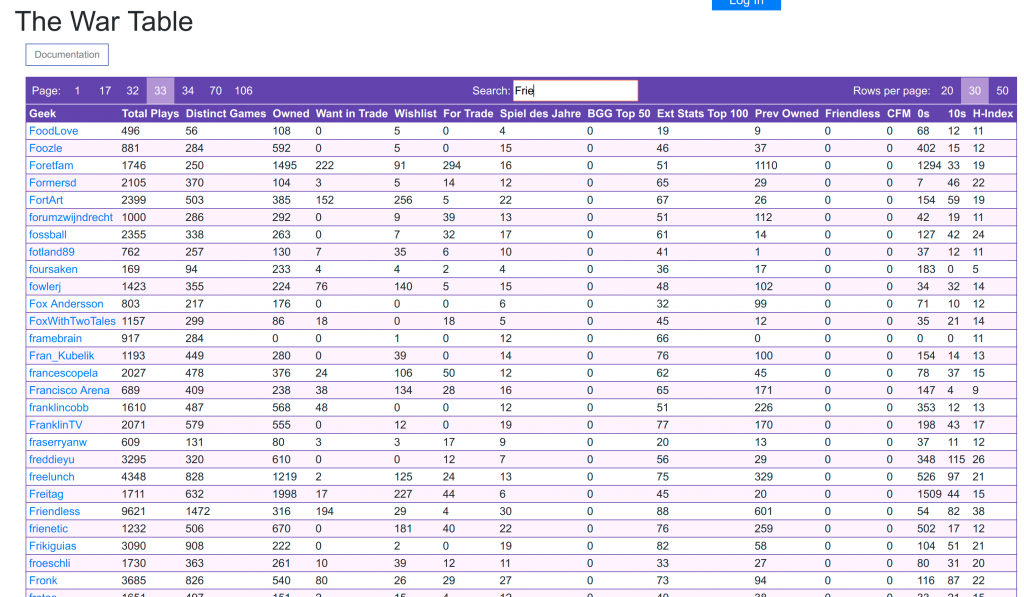I may have mentioned several times on this blog that I use a technology called Angular to write the web pages on the site. That’s what I use at work so I have some experience with it. There’s a competing technology called React, which I have heard a lot about, in that I have subscribed to various React podcasts and so on, and generally opened myself up to it in the hope that understanding would come without too much effort.
Several BGG users who use React have told me “Angular’s dead! React has won that battle!” So, in response to such taunting, and also in response to a weakness in Angular where I can’t have two Angular applications on the same page, I decided to rewrite the navigation bar in React. The nav bar is a terribly simple component, and it couldn’t be that hard, could it?
Indeed, it was not. React (like Angular) has a nice feature where I can change the code and see it instantly changed in my web browser. So, following my usual process of one Google search for one line of code, I got it working to my satisfaction. And it was so simple I really did not need React, but maybe some other ideas I have will justify my choice in the future.

So that was good, I had some working React, now I just needed to update my process to take the JavaScript that React produced and put it onto my web site. React produced 3 files, with extremely unhelpful obfuscated names that change every time you change anything. This is bad because the rest of my site, which loads those files, does not change very much. I edit those files by hand, and there’s no way I’m going to edit them to put unhelpful obfuscated file names into them on a regular basis.
No problem! There’s a thing called webpack which does that. Oh yeah, except for the problem that webpack is badly documented, hard to configure, and keeps changing. My first attempt to use it involved copying some configuration I found on the internet (it seemed like a good idea at the time). And that seemed to work at first, but then it stopped. So I had to poke around and debug a whole lot of things to figure out what was going on, and that took WAY TOO LONG.
Of course, this could have been a whole lot easier if React had not generated the unhelpful obfuscated file names, but the React developers refuse to understand why anyone might not want that. It seems that React is the whole universe, and once the code works in any fashion, their job is done. They have no concern with fitting in with larger processes. Nevertheless despite my fury on that particular point, I liked React and I’ll use it again. Webpack, on the other hand, needs a bullet in the head.
Well, I hope this blog post provides me some catharsis! I’ve spent several evenings reading up on how webpack works when I never cared to know in the first place.
One final word. Angular is not dead. In my time outside the React world, I heard a lot about state management. There’s a technology called Redux which is used to help with that. It’s totally irrelevant in the Angular world, because we don’t have the state management problem – the solution is built in. So it worries me a bit that React requires a complex (and by all accounts, really boring) solution to a non-problem. Angular does have its problems (I nominate zone.js) but I’d say otherwise the technologies are equally capable, but different. And different is OK.



